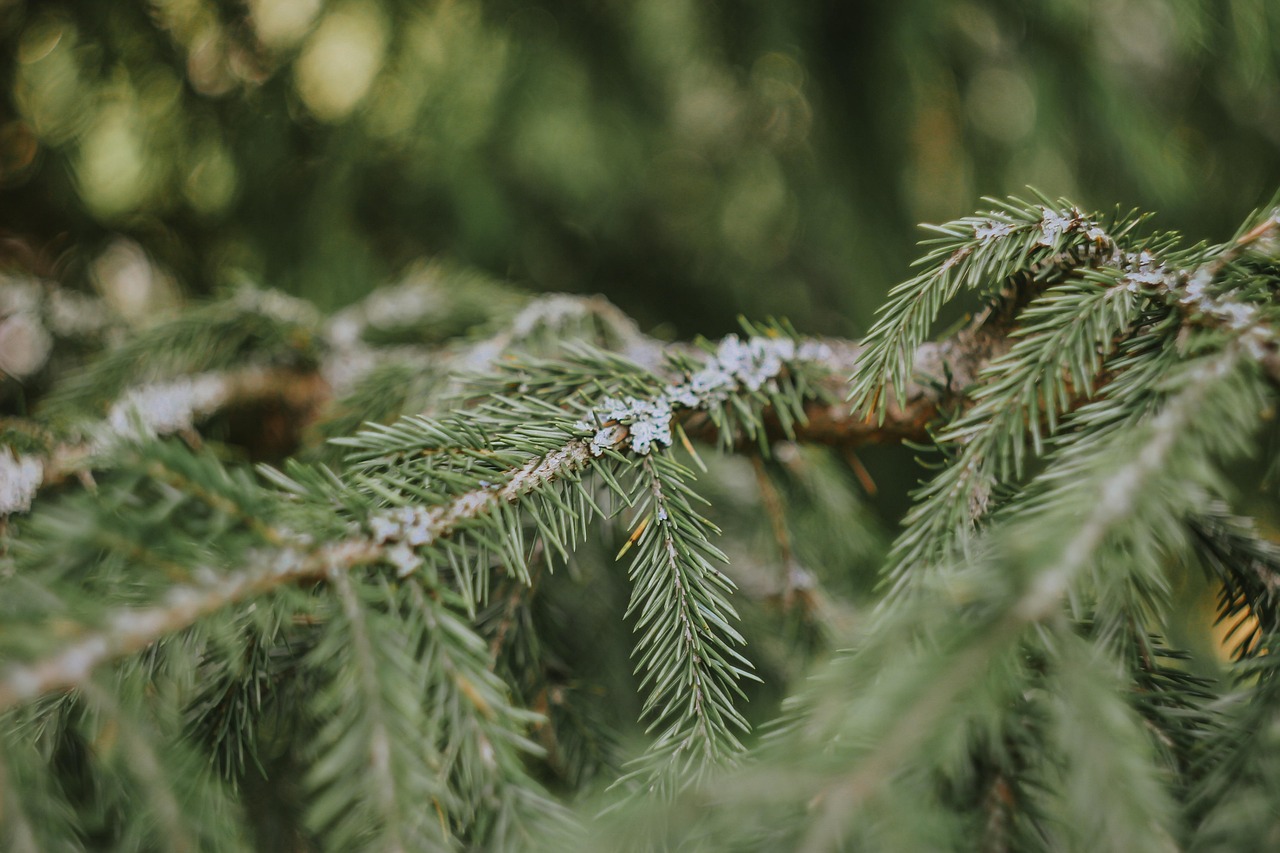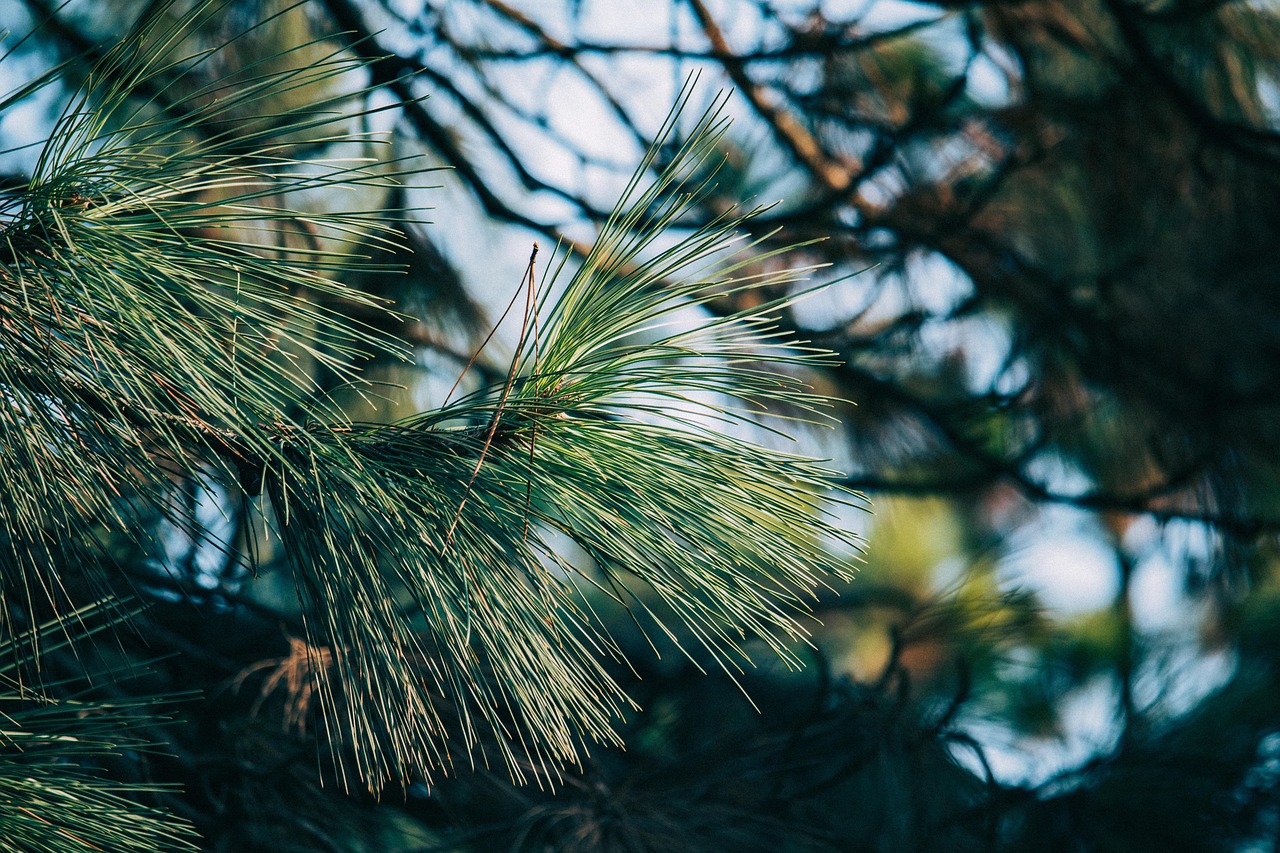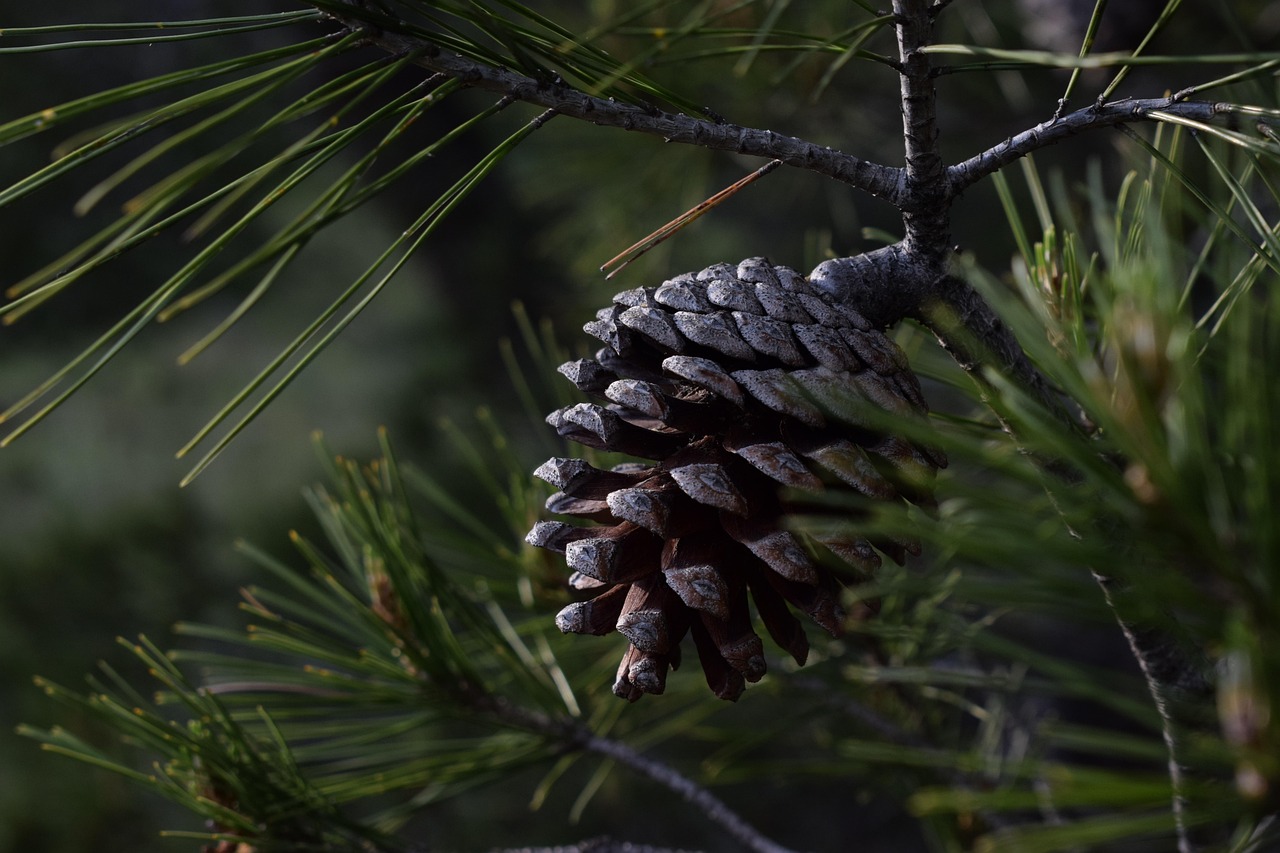Trimming an overgrown pine tree safely to reduce its height requires careful planning and execution. Start by assessing the tree’s health and structure, using proper tools. Always wear protective gear and follow safety measures to prevent accidents while cutting branches. It is advisable to hire a professional if the task seems too complex.
Understanding Pine Trees

Pine trees are popular for their resilience and beauty. They are often used in landscaping for their aesthetic appeal and ability to provide shade. However, if left unattended, they can grow excessively tall and wide, leading to various issues. Overgrown pine trees can obstruct views, block light, and even pose risks during storms.
Trimming these trees is essential not just for appearance but also for health and safety. Regular maintenance helps promote healthy growth and prevents potential hazards. Understanding the right techniques for trimming is crucial for effective height reduction without harming the tree.
Why Trim Overgrown Pine Trees?
Trimming overgrown pine trees serves several purposes:
- Safety: Reducing height minimizes risks of falling branches during storms.
- Health: Proper trimming encourages healthy growth by removing dead or diseased branches.
- Aesthetics: Trimming enhances the visual appeal of your landscape.
- Light Access: Thinning the canopy allows sunlight to reach lower plants and grass.
Tools Needed for Trimming
Before beginning the trimming process, gather the appropriate tools. Using the right equipment ensures efficiency and safety. Here is a list of commonly used tools:
- Pruning Shears: Ideal for small branches.
- Loppers: Useful for cutting thicker branches that are out of reach.
- Saws: A handsaw or chainsaw may be necessary for large branches.
- Safety Gear: Gloves, goggles, and a hard hat to protect against falling debris.
When to Trim Pine Trees
The timing of the trimming plays a significant role in the health of the tree. The best time to trim pine trees is during late winter to early spring before new growth begins. This timing allows the tree to heal quickly and minimizes stress. Avoid trimming during the fall, as this can open up wounds that may lead to disease.
Step-by-Step Trimming Process
Follow these steps to trim your overgrown pine tree safely:
- Assess the Tree: Look for dead or diseased branches and evaluate how much height needs to be reduced.
- Plan Your Cuts: Decide which branches to cut while maintaining the tree’s natural shape.
- Start from the Bottom: Begin trimming lower branches and work your way up to avoid climbing over cut branches.
- Cuts at an Angle: Make cuts at a slight angle to promote healing and prevent water accumulation on the cut surface.
- Step Back Frequently: Regularly step back to assess your progress and ensure the tree maintains a balanced appearance.
Safety Precautions
Safety should always be a priority when trimming trees. Here are some important precautions:
- Wear Protective Gear: Always wear gloves, goggles, and a hard hat.
- Use Ladder Safely: If using a ladder, ensure it is stable and positioned correctly.
- Avoid Power Lines: Stay clear of electrical lines and use caution if working near them.
- Have a First-Aid Kit Ready: Be prepared for any minor injuries that may occur during the process.
Taking these safety measures seriously will help ensure a successful trimming experience without unnecessary risks. Trimming an overgrown pine tree can enhance its beauty while maintaining safety in your yard.
Post-Trimming Care for Pine Trees
After trimming an overgrown pine tree, it is essential to provide proper care to ensure the tree’s health and recovery. Just like any living organism, trees need time to heal and adapt after significant changes. Here are some key aspects to consider for post-trimming care.
Watering
Proper watering is crucial after trimming. The tree may experience stress from the loss of branches, and providing sufficient moisture can help it recover more effectively.
- Check Soil Moisture: Before watering, check the soil moisture levels. The top inch should be dry before you water again.
- Deep Watering: Water deeply but infrequently. This encourages deeper root growth, which is vital for stability.
- Avoid Overwatering: Be cautious not to overwater, as excess moisture can lead to root rot.
Fertilization
Fertilizing your pine tree can aid its recovery and promote healthy growth. However, timing and type of fertilizer are crucial.
- Use a Balanced Fertilizer: A slow-release, balanced fertilizer is ideal for pine trees. Look for one with equal parts nitrogen, phosphorus, and potassium.
- Timing: Fertilize during the early spring when the tree is beginning its growth cycle.
- Avoid Late Fertilization: Do not fertilize in late summer or fall, as this can stimulate new growth that may not harden off before winter.
Common Mistakes When Trimming
Understanding common mistakes can help prevent damage to your tree and ensure effective trimming. Here are some pitfalls to avoid:
- Over-Pruning: Removing too many branches can lead to stress and vulnerability. Always follow the one-third rule—never remove more than one-third of the tree’s canopy at a time.
- Poor Cutting Techniques: Using improper cutting techniques can harm the tree. Always make clean cuts rather than tearing or ripping branches.
- Ignoring Health Signs: If a section of the tree appears unhealthy, do not ignore it. Assess the area thoroughly before deciding on trimming.
- Neglecting Tree Structure: Maintain the natural shape of the tree while trimming. Avoid creating awkward angles or flat tops that can weaken the structure.
Signs Your Pine Tree Needs Professional Help

Sometimes, it is best to call in a professional arborist. Here are signs that indicate your pine tree may require expert assistance:
- Severe Damage: If branches are large and heavy or if the tree has suffered storm damage, it is best to consult a professional.
- Pest Infestation: Signs of pests, such as sawdust around the base or visible insects, are indicators that a professional should assess the situation.
- Disease Symptoms: Yellowing needles, unusual growths, or fungi at the base of the tree may indicate disease requiring expert evaluation.
- Height Issues: If your pine tree is excessively tall and poses a risk to structures or power lines, professional trimming may be necessary to ensure safety.
The Benefits of Hiring a Professional Arborist
While some homeowners may choose to trim their pine trees themselves, there are several advantages to hiring a professional arborist:
- Expert Knowledge: Arborists understand tree biology and growth patterns, ensuring that trimming is done effectively without harming the tree.
- Specialized Equipment: Professionals have access to specialized tools and equipment that make the job safer and more efficient.
- Safety Measures: Experienced arborists follow strict safety protocols, minimizing risks associated with trimming large trees.
- Aesthetic Expertise: A professional can shape the tree aesthetically while maintaining its health and structural integrity.
Considering these factors will help you decide whether to tackle the trimming yourself or seek professional help. Proper care and consideration will ensure your pine tree remains healthy and beautiful for years to come.

Environmental Considerations
When trimming overgrown pine trees, it is essential to consider the environmental impact of your actions. Trees play a vital role in the ecosystem, providing oxygen, improving air quality, and supporting wildlife. Here are some important environmental considerations to keep in mind:
Preserving Wildlife Habitats
Pine trees often serve as habitats for various species of birds, insects, and mammals. Before trimming, assess the tree for any signs of wildlife:
- Nesting Birds: Check for nests in the branches, especially during spring and summer.
- Insect Habitats: Be aware that some insects may be beneficial to the tree and its ecosystem.
- Mammal Dens: Look for signs of small mammals that may use the tree for shelter.
If you notice active nests or habitats, consider delaying trimming until after the breeding season to avoid disrupting these creatures.
Seasonal Timing and Local Climate
The timing of trimming can also affect the tree’s health and the surrounding ecosystem. Depending on your local climate:
- Winter Trimming: In colder climates, late winter is often best as trees are dormant, reducing stress.
- Summer Pruning: In warmer regions, summer pruning can be beneficial for shaping but should be done carefully to avoid excessive heat exposure.
- Avoid Heavy Rain: Trimming during wet conditions can lead to increased disease risk due to open wounds.
Tree Diseases and Pests
An important aspect of maintaining your pine tree’s health involves being vigilant about diseases and pests. Recognizing early signs can prevent larger issues down the road.
Common Pine Tree Diseases
Pine trees can be susceptible to a variety of diseases. Here are a few common ones:
- Pine Bark Beetle Infestation: Look for signs such as small holes in the bark and sawdust around the base of the tree.
- Root Rot: Symptoms include yellowing needles and stunted growth. This condition often occurs in overly wet conditions.
- Needle Cast: This fungal disease causes needles to turn yellow and drop prematurely. Regular monitoring can help manage outbreaks.
Pest Management Strategies
Effective pest management is crucial for maintaining healthy pine trees. Consider these strategies:
- Regular Inspections: Frequently inspect your trees for any signs of pests or disease.
- Natural Predators: Encourage beneficial insects like ladybugs that feed on harmful pests.
- Pesticides and Treatments: Use pesticides only as a last resort and opt for organic options when possible to minimize environmental impact.
Cultural Practices for Healthy Pine Trees

Maintaining healthy pine trees goes beyond just trimming. Implementing good cultural practices can enhance growth and resilience:
Mulching
Applying mulch around the base of the tree can provide numerous benefits:
- Moisture Retention: Mulch helps retain soil moisture, which is essential for tree health.
- Weed Suppression: A layer of mulch reduces competition from weeds.
- Temperature Regulation: It helps keep soil temperatures stable, protecting root systems.
Soil Health
The health of the soil directly affects the health of your pine tree. Consider the following methods to improve soil quality:
- Soil Testing: Regularly test your soil to determine nutrient levels and pH balance.
- Add Organic Matter: Incorporate compost or well-rotted manure to enrich the soil.
- Avoid Compaction: Limit foot traffic and heavy equipment near the root zone to prevent soil compaction.
By focusing on these environmental considerations, pest management strategies, and cultural practices, you will contribute to the long-term health and vitality of your pine trees while ensuring they remain a valuable part of your landscape.
Maintenance and Long-Term Care
Once you have successfully trimmed your overgrown pine tree and ensured its immediate health, ongoing maintenance is essential for its long-term vitality. Regular care practices will help the tree thrive while minimizing future trimming needs. Here are some additional strategies for maintaining healthy pine trees:
Regular Inspections
Conducting routine inspections can catch potential issues early. Look for signs of:
- Fungal Growth: Check for unusual mushrooms or growths on the trunk or ground.
- Needle Discoloration: Yellowing or browning needles may indicate stress or disease.
- Branch Health: Monitor the condition of branches for any signs of dieback.
Addressing these issues promptly can prevent more severe problems from developing.
Seasonal Care
Adapting your care routine to the seasons is essential. Here are some seasonal tips:
- Spring: Inspect for new growth and apply a balanced fertilizer if necessary.
- Summer: Ensure adequate watering during dry spells, especially for young trees.
- Autumn: Clean up fallen needles and debris to reduce pest habitats and promote air circulation.
- Winter: Protect young trees from harsh winter conditions using burlap wraps if needed.
Community Involvement and Resources
Engaging with local gardening communities or tree care organizations can provide valuable resources. Many communities offer workshops on tree maintenance, including trimming techniques and disease management. Here are some resources to consider:
- Extension Services: Many universities provide free resources and advice on tree care.
- Local Arborist Groups: Join groups that focus on tree health and community beautification efforts.
- Online Forums: Participate in online discussions to share experiences and learn from others in your area.
Final Thoughts
Trimming overgrown pine trees is not merely a task; it is a vital practice that supports the overall health of your landscape. By understanding proper techniques, safety protocols, and ongoing maintenance, you can ensure that your pine trees remain healthy and beautiful for years to come. Remember that while DIY trimming is possible, recognizing when to seek professional help is equally important to prevent lasting damage to your trees.
Incorporating environmental considerations and cultural practices into your tree care routine enhances not only the health of your pine trees but also contributes positively to your local ecosystem. By taking proactive steps today, you invest in the beauty and sustainability of your outdoor environment for future generations.
Whether you choose to trim your trees yourself or hire a professional, the key lies in informed decision-making. With the right knowledge and practices, you can manage your pine trees effectively, ensuring they continue to thrive as a valuable part of your landscape.
